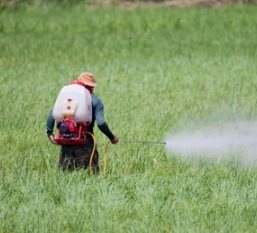
Earlier this year, we reported on the high levels of arsenic found in certain types of foods, particularly those made with brown rice syrup. According to an ongoing investigation by the Food and Drug Administration (FDA), unsafe arsenic is being found in rice. A recent study by Consumer Reports found the same, with that organization now recommending that individuals limit the amount of rice they consume.
The FDA is initially recommending the same thing, though their recommendations lack specificity pending the collection of more data. For now, FDA commissioner Dr. Margaret Hamburg is advising individuals to consume a balanced diet featuring a wide variety of grains, to both maximize nutrition and minimize the potential impact of eating any food in particular. There are two types of arsenic that could be lurking in your rice.
Organic and Inorganic Arsenic
Depending on its chemical makeup, arsenic can be classified as either inorganic or organic. Both types of arsenic can be naturally occurring, or resultant from the use of pesticides that contain arsenic and other human activity.
Inorganic arsenic is the more dangerous of the two — it’s carcinogenic, meaning that it’s known to cause cancer, and frequent exposure even to low levels of inorganic arsenic may lead to cardiovascular disease and Type 2 diabetes, in addition to skin, lung and bladder cancer.
The FDA’s Ongoing Study
The FDA plans to test a total of around 1,200 rice products in the United States, and they’ve completed roughly 200 of those tests already. So far, the researchers have found inorganic arsenic in several brands of short and long-grain white rice, brown rice, Basmati rice, various rice cereals, rice milk and rice cakes. The most contaminated product tested so far was a certain brand of long-grain brown rice, which contained 10.5 micrograms of inorganic arsenic per serving. On average, most products were found to contain between 3.5 and 6.7 micrograms of inorganic arsenic per serving.
FDA deputy commissioner for foods Michael Taylor said that it’s important not to be alarmed just yet. He said that further data collection and analyzation will allow them to make specific recommendations for lowering the level of rice consumed in diets, or otherwise reducing arsenic exposure.
How Much Arsenic is Too Much?
The Environmental Protection Agency (EPA) limits the amount of arsenic that can legally be present in water to 10 parts per billion. However, they have no specific regulations pertaining to arsenic levels in food. It’s possible that the current investigations by the FDA could lead to the formation of those limits.
According to a 2011 study, the more rice a person eats, the more likely she is to have a high level of arsenic in her system. The study confirmed that eating half a cup of cooked rice delivers the same amount of arsenic as drinking 34 ounces of water with an arsenic concentration of 10 ppb, the maximum allowable amount.
The medical community has yet to determine exactly how much arsenic would need to be consumed before health is affected. However, some experts suggest that consuming 10 grams of arsenic over the course of your life could increase your risk of cancer and other diseases. This would equate to an enormous amount of rice since most of the products tested by the FDA so far have contained between 3.5 and 6.7 millionths of a gram of arsenic. In other words, eating one million servings of rice would deliver between 3.5 and 6.7 grams of arsenic to your system.
Arsenic Found in Rice: The Bottom Line
The FDA is currently conducting a massive investigation regarding arsenic found in rice. Although they have yet to make specific recommendations pertaining to limiting rice in your diet, it may be wise to do so until further information is available.













